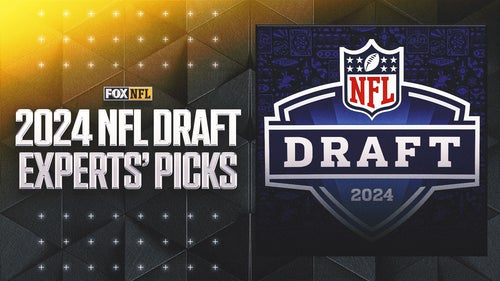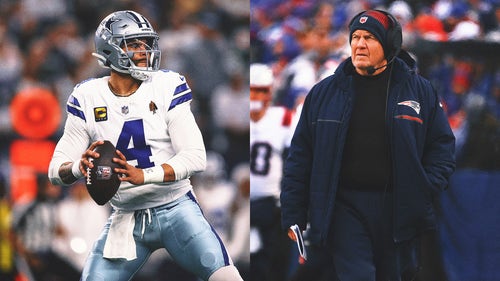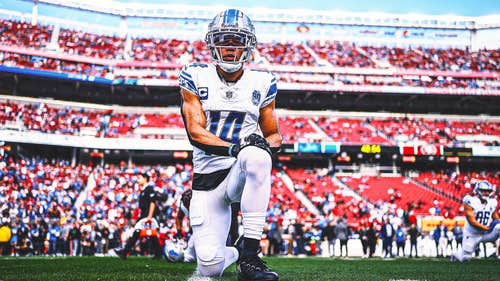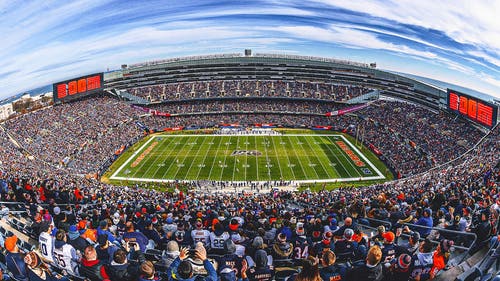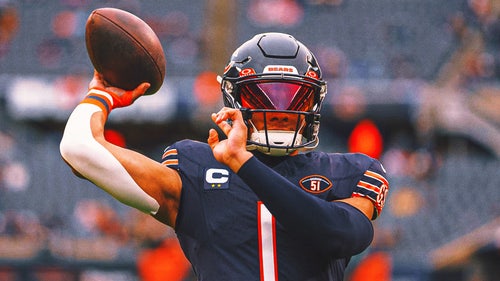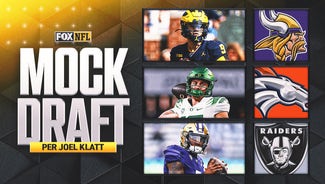
Ollie Matson: More than a Hall of Famer
“It matters not how a man dies but how he lives.’’
That quotation was uttered centuries ago by renowned British author Samuel Johnson and it holds forth to this day. It is fitting in this tribute to my uncle, Ollie Matson, who has left those of us on earth as he has been called to glory on this day, Feb. 19, 2011 … at the age of 80.
He was always bigger than life to me, an Olympic medalist, an NFL star and eventual Pro Football Hall of Famer. He was Ollie Matson, who in his heyday was touted as the Fastest Man in Cleats — a seven-time All-Pro, who was equally deadly to a defense as a runner and a receiver, who in his prime was the most dangerous man in the league when poised to return a punt or a kickoff, and who in his rookie year, was the Chicago Cardinals’ best running back and best defensive back.
And yet, to me he was just Uncle Ollie. He was my mother’s twin brother, the barbeque master of the family, the provider of sage advice who could be found relaxing in the den listening to the music of the legendary Dinah Washington, with whom he was close friends. He was Uncle Ollie, the Godfather of nicknames, and how he ever came to call my cousin, Leandrus “Spoon”, none of us in the family ever knew.
So revered was Uncle Ollie by the young males in our large family that none of us deemed ourselves worthy enough to even think of wearing his jersey No. 33 when we played in our various organized sports leagues.
Not even Uncle Ollie’s oldest son, Ollie III — a stellar athlete whom we all called Bubby and who grew to be 6-foot-6 (four inches taller than his dad), who chose basketball over football despite being recruited by Notre Dame and Oklahoma, among other college football powers.
Growing up, I remember going to the local high school with Uncle Ollie when he worked out in the weeks leading up to training camp. One lap around the track was all that I could manage because I’d burn myself out trying to keep up with my uncle’s long strides. The highlight of the summer for me was visiting training camp when Uncle Ollie was playing for the Los Angeles Rams. It was a unique up-close-and-personal experience and although it has been many, many years, I still can recall standing next to him on the sidelines during intrasquad scrimmages.
I remember get-togethers held at Uncle Ollie’s house, where players like Dick "Night Train" Lane came by to hang out. At night, we kids used to make tents. Uncle Ollie’s high-cut cleats were ideal for holding down the edges of our tents.
At the drop of a hat, I could recite the current season statistics of Uncle Ollie, even at that young age, never realizing that my eventual calling in life would include writing about professional players and needing to be completely accurate about their stats.
But it was Uncle Ollie who inspired me to be a sports writer. When it was obvious to him that my dreams of playing in the NFL would never be fulfilled, he said to me, “Son, you’re a good writer and you know sports, why don’t you become a sports writer?’’ And I did.
Through the years, I watched the way Uncle Ollie treated his mother, my grandmother, whom we all called Gramcie, with the ultimate reverence and respect. My endeavor in life was to treat my mother, Uncle Ollie’s twin sister, in the same manner.
My most vivid memory of Uncle Ollie’s playing career occurred about 45 years ago. It was to be his final NFL season and he had returned to San Francisco, where he was a college legend, to play against the San Francisco 49ers as a member of the Philadelphia Eagles.
It was a miserable, rainy day and Uncle Ollie was slated to only play on the kickoff-return team. But an injury to starting running back Timmy Brown on the opening kickoff thrust Uncle Ollie into fulltime duty.
I could but I won’t give you the play-by-play of that game; the Eagles rallied from a 20-7 deficit to win 35-34, the winning touchdown scored on a leaping catch by a muddy Uncle Ollie.
The real drama began after the game. During those years, fans could run on the field at the conclusion and kids often asked for and received chin straps from their favorite players.
The sportswriters were walking off the field with Uncle Ollie, interviewing the hero of the game. The walk and the interview got interrupted every 10 yards, as Uncle Ollie stopped and took his helmet off, handing it back and forth between Bubby and me.
My cousin Maurice, then 11 years old, never got a chance. That’s because he had worn his entire Pop Warner football uniform to the game. Why?
“I was going to help Uncle Ollie,’’ he told me, many years later. I still cringe when I visualize what those sportswriters on deadline must have been thinking about us kids.
Trying futilely to keep up with the group that day was my six-year old cousin Bruce, Uncle Ollie’s youngest son. He had almost reached us when out of nowhere a teen-age Ray Nitschke wanna be blindsided him.
Covered head-to-foot in mud, Bruce arose bawling, where upon a mud-clad Uncle Ollie gave him a stern look and promised Bruce that he would get a licking when they got home, all because Bruce had gotten his white pants soiled.
Although I was not present at the induction – Gramcie took my sister instead – I was overcome with emotion in 1972, when Uncle Ollie was enshrined into the Pro Football Hall of Fame, in his first year of eligibility.
Understandably then, the past several years were painful for me, watching my lifelong hero dissolve from the robust, world-class athlete that he once was into a bedridden convalescent, who for the final years of his life, was unable to speak.
His affliction was a form of dementia that doctors attributed to the head injuries that he suffered during his football career. A study in 2009, commissioned by the NFL, reported that Alzheimer’s disease or similar memory-related diseases appear to have been diagnosed in former NFL players at a significantly higher rate than for other men. The studies reported that it was 19 times the normal rate for men ages 30-49.
His physical deterioration had been extremely hard on my mother, Uncle Ollie’s only sibling, who had “talked’’ with him almost daily by phone and has flown down from Oakland as often as she could.
Uncle Ollie communicated with his eyes that shone bright, all the way to the end.
Before this disease ravaged him and robbed him of his capacities, my Uncle Ollie continued to run daily, as part of his workout routine. He was an active member of the NFL Alumni Association.
I choose to remember my uncle this way - as my hero, my advisor and the bigger than life figure he was to me.
Art Thompson III is a national award-winning sports writer, who has covered the NFL, the NBA, Major League Baseball and college sports.






































































































































